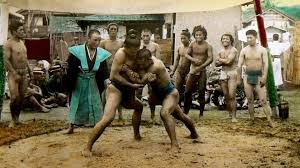Karate, a martial art with deep historical roots and a global following, is constantly evolving to meet the needs of contemporary practitioners. One of the traditional practices that is experiencing a resurgence and proving beneficial in this modernization process is tegumi. Originally an Okinawan grappling art, tegumi offers a wealth of techniques and principles that can significantly enhance modern karate training.
What is Tegumi?
Tegumi, sometimes referred to as “Okinawan wrestling,” is an ancient form of grappling and hand-to-hand combat practiced in Okinawa. It predates the more widely known striking arts of karate and incorporates a variety of techniques including throws, joint locks, holds, and ground fighting. Historically, tegumi was a form of self-defense and a competitive sport among Okinawans, emphasizing practical, close-quarters combat skills.
Integration of Tegumi into Modern Karate
1. Enhancing Close-Quarters Combat Skills
Modern karate often emphasizes striking techniques such as punches, kicks, and blocks. However, real-world self-defense situations frequently involve close-quarters combat where grappling becomes essential. Integrating tegumi into karate training can provide practitioners with a more comprehensive set of tools, improving their ability to handle situations where striking alone may not be sufficient.
2. Improving Physical Conditioning and Versatility
Tegumi training enhances physical conditioning by requiring strength, flexibility, balance, and endurance. The physical demands of grappling can help karate practitioners develop a more robust and versatile body, capable of adapting to various combat scenarios. This well-rounded physical conditioning complements the striking techniques of karate, making practitioners more formidable martial artists.
3. Developing Tactile Sensitivity and Awareness
One of the key benefits of tegumi is the development of tactile sensitivity and body awareness. Grappling requires practitioners to be acutely aware of their opponent’s movements, balance, and intentions. This heightened sense of touch and proprioception can improve a karateka’s ability to read an opponent during a fight, anticipate their moves, and react more effectively.
4. Expanding Defensive Techniques
Tegumi offers a range of defensive techniques that can be seamlessly integrated into karate. Joint locks, throws, and holds provide additional options for neutralizing an opponent without relying solely on strikes. These techniques can be particularly useful in situations where striking may not be the best option, such as when dealing with multiple attackers or in scenarios requiring restraint rather than aggression.
5. Enriching Kata and Bunkai Practice
Kata, the pre-arranged forms practiced in karate, often include movements that can be interpreted as grappling techniques. By studying tegumi, karate practitioners can gain a deeper understanding of the grappling applications (bunkai) hidden within their kata. This not only enriches their kata practice but also provides practical applications for the movements, making kata more relevant to real-world self-defense.
Modern Training Approaches Incorporating Tegumi
1. Integrated Training Sessions
Modern dojos can incorporate tegumi drills alongside traditional karate training. Sessions can include a mix of striking, grappling, and transition techniques to create a holistic training environment. This approach ensures that practitioners develop a well-rounded skill set.
2. Cross-Training with Grappling Arts
Many karate practitioners are now cross-training in grappling arts such as judo, Brazilian jiu-jitsu, and wrestling. This cross-training provides exposure to various grappling techniques and principles that can be incorporated into karate. Tegumi offers a culturally and historically relevant form of grappling that complements this cross-training trend.
3. Competitive Formats and Sparring
Introducing tegumi-based sparring sessions and competitive formats can enhance the practical application of grappling techniques within karate. These controlled environments allow practitioners to test their skills against resisting opponents, improving their combat effectiveness and confidence.
Conclusion
The integration of tegumi into modern karate represents a significant advancement in the martial art’s evolution. By embracing this traditional grappling practice, karate practitioners can develop a more comprehensive and versatile skill set. Tegumi enhances close-quarters combat abilities, physical conditioning, tactile sensitivity, and the practical application of kata, enriching the overall karate experience. As karate continues to evolve, the revival and incorporation of tegumi will undoubtedly play a crucial role in its modernization, ensuring that practitioners are well-equipped for both traditional practice and real-world self-defense.

